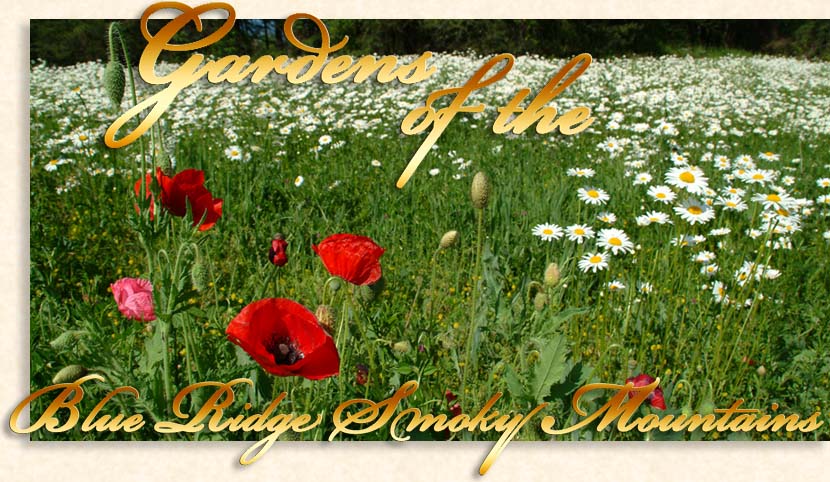
Consider the lilies of the field, how they grow; they toil not, neither do they spin.
And yet I say unto you, That even Solomon in all his glory was not arrayed like one of these.
Matthew 6:28-29; KJV
The sun awakens, caressing the earth surface,
Its pores open, beginning its mysterious purpose.
Light within life, rejuvenates the soil,
Conducting a rhythm, continuing the toil.
Wildflowers spring fourth with ever-glowing presence,
Reaching with joy, to the sun’s warm caresses.
Expanding, exalting, overtaking its ground,
Claiming its hold, the source will abound.
Misty dew falls, as raindrops trickle down,
Thirsty cries find comfort, once quenched settle down.
Shoots spiral upward, buds burst without a sound,
Reaching full maturity, conquering the high ground.
Completing each cycle, disappearing without a shout,
A cause for speculation, yet who is to doubt.
Decaying, then awaiting their very next performance,
Standing in the light, He gives His personal endorsement.
Pursing a course, beyond our comprehension,
Life grows on, fulfilling its inner-dimension.
If only our eyes, could see God’s good intention,
We would live our lives, with greater conviction.
Passing the equinox we once again find ourselves standing in the valley as day by day the earth slowly and miraculously comes alive, like a pot of boiling water it moves from stillness to explosion.
The reawaking of spring in the high country of the Blue Ridge Smoky Mountains is quite unique. In the lowlands of the mountain interior, the first signs of spring follow a horizontal path across the valley, growing ever so slowly as it makes its journey upward along the mountain slopes.
A peculiarity in its own development, life in the lower elevations gradually come into full bloom, while the upper regions along the ridge tops remain dormant, with sparse vegetation barely beginning to show. The best part of this experience is that you can enjoy early springtime in the lower mountain regions and at its full peak, you can then take a short drive up the mountain slopes and watch the early signs of spring all over again, growing radiantly under the warm sun.

The buds of the Dogwoods come early each year, sprinkling a snowflake resemblance on the trees branches with their white flower pedals locked in stillness above the ground. The wisteria stand alone with blooms of lavender colored clusters, from a distance they resemble lilacs or hanging bunches of small lavender colored grapes. Rhododendron, flaming azaleas, mountain laurel and the flowering blossom of the blackberry soon follow like an orderly parade of nature, each competing for your attention. Wildflowers flow across the open fields like a freshly laid carpet, rolling out a colorful welcoming mat ushering in a new season.
The Blue Ridge and Smoky Mountains are like a biosphere in high altitude. With its many National Forests and Parklands and its annual rainfall, mountain foliage responds like a natural wildlife arboretum, pristine and beautiful within its natural boundaries.
Inside the protective zones of North Carolina’s Pisgah and Nantahala National Forests along with Tennessee’s Cherokee National Forest, North Georgia’s Chattahoochee National Forest and South Carolina’s Sumter National Forest is an oasis of natural wildlife growth indigenous to the hardwood forest of the Southern Appalachian Mountains, home of the Blue Ridge Mountain Province.
Likely the most collectively unique and most protected natural forestlands of all the Blue Ridge Mountains, is the Great Smoky Mountains National Park. Within the 520,000 plus acre parklands, is a geological climate that strongly influences its biologically diverse plant life. The parklands support 110,000-acres of old-growth forest (virgin forest untouched by logging), 1,600 species of flowering plants, 50 fern and fern allies, over 1,800 different fungi, 300 different kinds of mosses and liverwarts, and 230 lichens. This ecosystem is supported by an average of up to 100-inches of annual rainfall and its abundant watershed.
The United Nation’s Educational Scientific and Cultural Organization (UNESCO), designated the Great Smoky Mountains National Park as an International Biosphere Reserve in 1976. Though beautiful and natural in its origin, the parklands are under threat of more than 300 species of non-native plants that have invaded or been introduced into the Smoky and surrounding Blue Ridge Mountains.
General decorative flora and shrub displays, usually located around private homes, are less of a threat than the vine like plants such as kudzu which chokes out other natural plants and steals precious moisture during times of unexpected droughts. Though I mention earlier the beautiful flowering clusters of the wisteria, these trees are alien to the mountains along with several other trees you’ll find growing wild along the mountain slopes.
These non-native species of plants often disrupt plant growth or cause disease due to fungus and insects. It’s not natural to see entire coves or large stands of trees, standing bare of their once beautiful greenery, all dead due to non-native plant invasion. Where trees die so does the forest floor that is supported by the natural forest. The exotic blight of the chestnut tree destroyed the giant chestnut trees entirely during the early 20th century; research continues to restore these giants of the forest. The pine beetle has literally eaten the life out of all the pine trees in some mountain areas, and the hemlock disease has been stripping the needles from the mighty hemlocks. There are groups working to save the hemlock trees, and hopefully they will soon be successful. Even with these serious issues of infestation and disease, the natural forest thrives, hiding its scars and flaws behind beautiful walls of green forest and vibrant plant life.
With keen foresight, the National Forest, State Forest and there Parklands here in these Blue Ridge Smoky Mountains, have set aside and protected these treasures of beauty we have come to appreciate so much, for now and for generations to come.
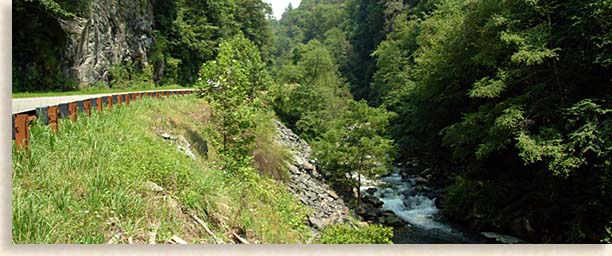
Traveling to these mountains in order to experience this natural state of nature’s wonders, allows you to go back through time into a past where things were once more pristine and undisturbed by human encroachment. Miraculous in its very own nature, meticulously cared for by the nurturing hand of Mother Nature, conceived and orchestrated by Divine Design, the high mountain forest perseveres in spite of its previous setbacks.
This entire high country biosphere is supported by a soil base conducive to its flourishing needs and an abundant mountainous watershed that has channeled its waterways into a semi-rainforest type atmosphere, especially at its cloud soaked higher elevations. Though the soil does appear to be rich enough for plant life, it is more ideally suited for forest growth. Basically trees can grow great here in the highlands, but when it comes to cultivated crops you have to remember that most of this land is mountain country not farmland.
In the lowlands and valleys where the rivers and large creeks flow across the open landscape, the soil is richer yet not always ideal for cultivation. Apple orchards thrive in the far southern mountain ranges because of the warm moist climate, plus apple trees are trees and the soil is just right for growing trees. Various types of cultivated gardens require a specialized horticultural care in order to produce at their highest standards in the mountains.
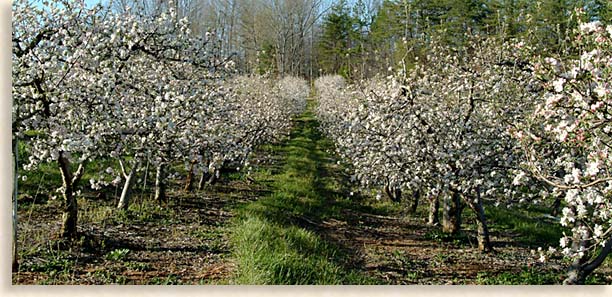
The need for soil enrichments, the elimination of rocks and getting consistent sunlight due to too much tree shading, can be a frustrating challenge for many mountain folks wanting to work their own personal vegetable, herb or flower gardens. Even with these challenges, a variety of personal, or garden clubs gardens are still very popular within these mountains, yet often limited by level space, makes for more creative layouts for gardening. Often, new comers will turn to the local old timers for tips on the challenges of rocky grounds or vertical gardening.
As an agricultural species, we can always count on our society’s “green thumbs,” to produce even under difficult circumstances, they’re not going to let any big old mountain get in their way. Throughout these mountains you will find some the most beautiful, large planned gardens that rival their lowland competitors, all nurtured by local garden clubs, individuals or groups and opened for all the public to enjoy.
These garden clubs and groups defy the obstacles of mountain gardening, as their gardens excel under their masterful green thumbs and horticultural wisdom. While some public garden caretakers prefer the exotic species, other caretakers prefer the natural growing flow of native wildflower gardens that are accustomed to the mountain soil.
Some of the varieties of gardens you’ll find here under the sun of the Blue Ridge Smoky Mountains are: Exotic greenhouse gardens, rose gardens, formal perennial gardens, herb and kitchen gardens, white gardens, canal gardens, cottage gardens, rhododendron, laurel and azalea gardens, vegetable gardens, conifers-ground cover gardens, butterfly gardens, winter gardens, wildlife gardens, shade gardens, woodland gardens, sunken gardens, therapy gardens, hydrophilic and green house gardens. And of course, rock gardens. We have happened across many creatively laid out rock gardens with terraced walls. Did I mention the mountains have more rocks than trees?
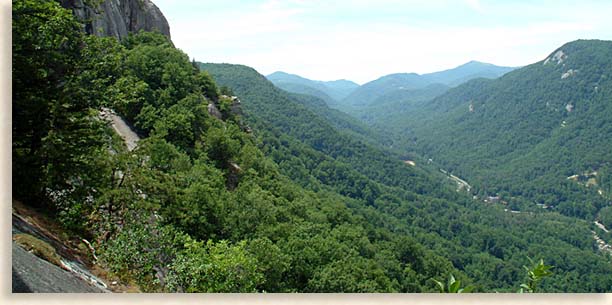
Whether its your desire to hike through the national forest, admiring the wildlife flora of its hidden meadows, or if you are looking for something more colorful and less impact on your footwear such as a cultivated garden near the pavement you’ll find what you are looking for here in the high country. Springtime in the mountains is a treasure trove of floral delights awaiting your admiring attention. Whether you’re a year round resident, a vacation homeowner or one of our many seasonal guests, you will enjoy the garden tours we are recommending.
A spring day in the mountains will delight your senses with a variety of wild and cultivated flowers with their aromas filling the crisp clean air. Be sure to take a lot of photos and hug a tree if you’re inclined to, most of all just get out in the great outdoors and enjoy yourself, its memories like these that you will want to share with your friends and family.
The Hamilton Rhododendron Garden
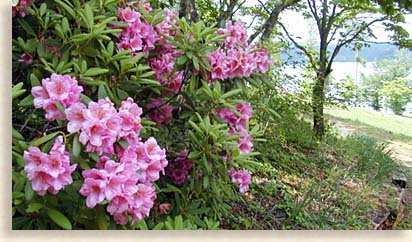
Located at the popular and diverse Georgia Mountain Fairgrounds next to the town of Hiawassee, Georgia; is the Hamilton Rhododendron Garden. A spectacular floral experience of color and beauty, radiating and illuminating when in full bloom throughout the month of May with its first buds opening in April.
Properly known as the Hamilton Rhododendron Garden, the garden boasts one of the largest collections of hybrid rhododendrons in the state of Georgia, with more than 3,000 plants in bloom. A soft covered pine-bark trail leads through the garden where you’ll find yourself figuratively lost in a sea of color with large rhododendron blooms, mountain laurel and azaleas of all colors and varieties.
This beautiful rhododendron garden lies along the tranquil southern shoreline of one of North Georgia’s most beautiful mountain lakes, Lake Chatuge.
The setting is breathtaking with huge mountains rising up from the valley floor, surrounding the shoreline of Lake Chatuge. This natural caldron like setting of mountains and lake has an overall tranquil sense about it and most fitting to this unique outdoor experience.
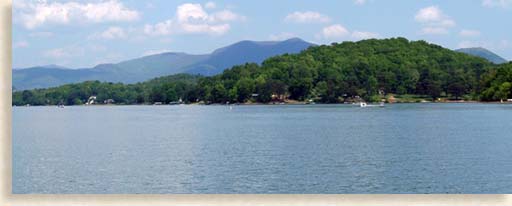 If you are traveling to the North Georgia Mountains and are looking for a relaxing stroll of color, we highly recommend you take in the Hamilton Rhododendron Garden.
If you are traveling to the North Georgia Mountains and are looking for a relaxing stroll of color, we highly recommend you take in the Hamilton Rhododendron Garden.
Though the garden and its trails are opened all year, free of admission fees, a $3 donation is requested for help to keep this special rhododendron garden tour maintained and available to the public.
The Gardens at Biltmore Estate
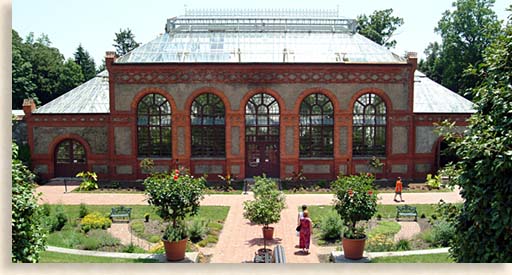
The Gardens at Biltmore Estate are likely the most opulent and prestigious collection of gardens in the Blue Ridge Smoky Mountains. The gardens are located within the over 6,000-acre Biltmore Estates and Winery. Historical Biltmore Estates, is located adjacent to Biltmore Village next to Asheville, in Buncombe County North Carolina.
The massive sprawling estate and the Biltmore House was the dream of George Washington Vanderbilt (1862-1914). The Biltmore House was completed in 1895 followed by the conservatory and gardens. The formal gardens are located by the great house with a large acreage of wildlife gardens flowing out from the property with trails leading from the main house into the surrounding woodlands of the estate.
Renowned architect Richard Hunt (1828-1895) designed the Biltmore House, which contains 250-rooms, one being the stylish glass-roofed Winter Garden room. Hunt also designed the glass-roofed Conservatory in the Walled Garden, next to the Biltmore House.
Landscape architect Fredrick Law Olmsted (1822-1903) was in charge of the landscape design at Biltmore Estate. The estate originally held over 125,000-acres, Olmsted had his work cut out for him. The job was big, but not for a man known as the founding father of American landscape. Olmsted, by the way was also the landscape architect designer for New York’s Central Park and the United States Capital grounds.
The entire Biltmore Estate is a garden within itself, with its formal gardens, wildflower gardens, wildlife park, vineyards as well as its farmlands and forestlands.
Olmsted designed the three-mile long “Approach Road” into the estate. The approach is captivating as you drive along anticipating your arrival at the Biltmore House. The formal grounds and terraces are amazing. Next to the Biltmore House and formal gardens is the 250-acre Deer Park wildlife-preserve, with its pond and lagoon. There you will find places of solitude and peace for reflection and quite meditation.
The formal gardens in and around the Walled Garden steal the outdoor show with its vibrant colors and fragrances. The fabled Rose Garden within the Walled Garden contains 2,300 roses in 250 varieties, including 159 All-American Rose Selections. This beautiful rose garden contains a number of heirloom roses donated to the estate dating back to 1869.
The architectural design of the Conservatory is a work of art, the centerpiece within the garden, a sanctuary in decorum. Inside you’ll find an exotic plant garden in a jungle like atmosphere.
Outdoor garden themes seem to pour out in all directions from the conservatory with the names of the Italian Garden, Shrub Garden, the Pergola, the Spring Garden and the Azalea Garden.

Beyond these gardens is the more natural plant life of the Blue Ridge Mountains in the 250-acre Deer Park wildlife preserve (no large animals roam the preserve other than deer). To stroll the formal gardens is quite relaxing, taking in both the formal gardens and Deer Park is even more enriching.
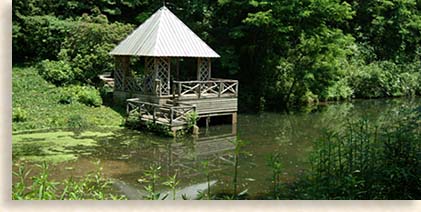 If you’re in Asheville or planning to visit the area, we highly recommend a tour of Biltmore Estate Gardens, as well as the Biltmore House, it truly is an American dream come alive, like fairytales and castles all rolled up into one.
If you’re in Asheville or planning to visit the area, we highly recommend a tour of Biltmore Estate Gardens, as well as the Biltmore House, it truly is an American dream come alive, like fairytales and castles all rolled up into one.
There is an admission fee to enter the Estate grounds where you can access the many gardens; the Biltmore House is a separate fee if you choose to tour the great castle.
If you would like to know more about Biltmore Estates read our story Legacy in Stone…
.
Joyce Kilmer Memorial Forest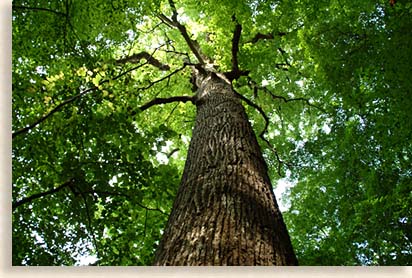 If you’re looking for the real, raw, untouched beauty of the Blue Ridge Smoky Mountains, in its most primitive natural form, we suggest this deep forest attraction, the Joyce Kilmer Memorial Forest.
If you’re looking for the real, raw, untouched beauty of the Blue Ridge Smoky Mountains, in its most primitive natural form, we suggest this deep forest attraction, the Joyce Kilmer Memorial Forest.
This ancient forest is located in the Joyce Kilmer Slick Rock Wilderness region of Graham County, North Carolina. Conveniently located just two miles north, off the eastern end of the scenic Cherohala Skyway along Joyce Kilmer Road. Joyce Kilmer Road is about 12 to 15 miles west of the mountain town of Robbinsville in Graham County, North Carolina.
Giant trees over 400-years old guard the grounds of this quiet undisturbed setting. Here the foliage has remained relatively untouched and uninterrupted by the logging saws. The giant trees that live here were only sapling when the first Europeans arrived here in the mid-1550s.
This is the place to visit if you’re looking to turn back the clock to the early days of North America’s virgin forest. Green is the color here, bright and translucent in the spring, dark and eerie in the summer and fully colored in the fall. Spring arrives here in these deep reaches of the forest with scattered dogwoods, a variety of ferns and touches of color from the wildflowers along the forest floor.
The Little Santeetlah Creek watershed flows through the heart of the Joyce Kilmer Memorial Forest, feeding this enormous hidden forest cove, giving life to its ancient trees.
Its quiet and peaceful here just like a memorial forest should be, the two-mile looped trail is rated moderate. This natural display of pristine forest is incomparable to any other forest lands in the eastern United States and a must see during one of your visits to this region of far Western North Carolina.
The memorial forest is named in honor of poet and World War I hero Joyce Kilmer who is acclaimed in the literary circle for his poem, “Trees.” Though he never saw this natural wonder shrine, his name lives on forever.
The Joyce Kilmer Memorial Forest is open free to the public. A paved parking area, picnic tables, outdoor grills and restrooms with running water will provide some creature comforts for your special visit.
We have visited many times and highly recommend this hiking tour. Be sure to wear good walking shoes, carry along bottled water and a camera for this 2-mile looped hiking experience. For a more in depth story on Joyce Kilmer Memorial Park, read our feature story.
Cashiers Community Celebration Garden
The town of Cashiers in Jackson County, North Carolina is a quaint, eloquent, yet rustic style, modest sized town with homes from moderate to elegant luxury. For visiting homeowners, the Cashiers community is a getaway paradise. For long time residents who’s local mountain families have lived there for generation, it’s just home.
The Cashiers Community Garden is located at the highway junction of 64 & 107, beginning on the southwestern corner of the only stoplight in Cashiers.
Landscape architect Michael Osowski of Cashiers is responsible for the design of this beautiful garden park, which is properly and affectionately titled, “The Village Green.”
When we first happened across the Village Green, it gave the appearance of a prestigious metropolitan park rather than one you would find hidden away in a semi-isolated mountain community, making this park all the more special.
As you enter the garden park, you first encounter a natural timber frame, cathedral styled pavilion, one of the many features the garden park contains. Crushed stone walkways take you to images of bronze statues, large abstract artworks, and a Stonehenge column sized, rock and metal sculpture. All placed appropriately and meticulously throughout the garden park, all awe inspiring to the mind and senses. The children’s playground area is a contemporary styled fort with towers, slide, swings and the ever-popular monkey bars make you want to think young.
A bronze plaque inset on a rock below the park’s resident bronze ballerina reads in part.
"The Village Green exists to preserve and enhance land for our community’s, spiritual, academic, recreational and cultural activities and to maintain the quality of life for all citizens and visitors in the greater cashiers area."
Dedicated on August 6, 1994. The Village Green will be a model community activities center for southern Jackson County.
Though beautifully designed throughout, the most impressive part of the garden park to Mrs. Highlander and I was the actual garden area. The flowers cultivated here left us speechless. The spirit of the garden radiated from the overwhelming fragrance and vibration of its color.
Standing in front of a towering wall of illuminating colorful flowers, we were held back from entering the sea of colors by narrow wooden fence rail. The symbolic wall kept us from drifting into the mysterious forbidden garden. We were left without words yet my camera found a voice in the reflections of colors and shapes it witnessed. Filled to our senses, we moved on further into park.
Next to the garden, we came across a stone sitting arena area, fashioned after a modest Greek forum. A small bronze plaque was mounted on the center backrest of the forum’s wall, I moved in for a closer look and saw an embossed image of a little girl, the inscription read.
 Kara Leigh Pulley Park, this property was donated to the Village Green by Bill and Martha Lee Pulley to honor their granddaughter, Kara Leigh Pulley December 2, 1994, “Kara Leigh and her brother, Stephen are the joy of our lives.
Kara Leigh Pulley Park, this property was donated to the Village Green by Bill and Martha Lee Pulley to honor their granddaughter, Kara Leigh Pulley December 2, 1994, “Kara Leigh and her brother, Stephen are the joy of our lives.
If you are traveling to Jackson County, this garden is worth the trip and free of admission fees.
Gifts from Above
Throughout this Blue Ridge Highlander feature story, we have walked, hiked or driven thru a mountainous landscape garden unparallel to anywhere in the world and found a very real, natural and cultivated reality, all for us to share. As often said, we sometimes forget to stop and smell the roses, to appreciate what has taken years, centuries, millennium or eons to create. All here for our pleasure, all created by His Glory!
Through creativity, patience and innate design, ones sincere thoughts and desires can manifest into a garden of expression that can touch many lives. Special gardens are created by special people; the miraculous lies in the internal design of nature.
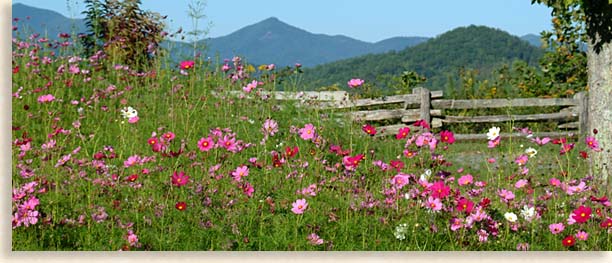
Living in the remnants of the Garden of Eden we can only pause for a moment and ask ourselves, “what if,” that all encompassing question concerning the origins of our being.
When making your way to our special gardens within the Blue Ridge Smoky Mountains, I leave you with some special words to ponder over and remember…“We all have to get back to the Garden.”
The Highlander
Genesis 1:11& 12; And God said, Let the earth bring forth grass, the herb yielding seed, and the fruit tree yielding fruit after his kind, whose seed is in itself, upon the earth: and it was so. And the earth brought forth grass, and herb yielding seed after his kind, and the tree yielding after his kind: and god saw that it was good.
Genesis 1:29; Behold, I have given you every herb bearing seed, which is upon the face of all the earth, and every tree, tin the which is the fruit of a tree yielding seed; to you it shall be for meat.
Genesis 2:8 & 9; And the Lord God planted a garden eastward in Eden; and there he put the man whom he had formed. And out of the ground made the Lord God to grow every tree that is pleasant to the sight, and good for food; the tree of life also in the midst of the garden, and the tree of knowledge of good and evil.
Matthew 6:30-33; Wherefore, if God so clothe the grass of the field, which to day is, and tomorrow is cast into the oven, shall he not much more clothe you, O ye of little faith? Therefore take no thought, saying, What shall we eat? What shall we drink? Or, Wherewithal shall we be clothed? For your heavenly Father knoweth that ye have need of all these things. 6:26; Behold the fowls of the air: for they sow not, neither do they reap, nor gather into barns; yet your heavenly Father feedeth them. Are ye not much better than they? 6:33; But seek ye first the kingdom of God, and his righteousness; and all these things shall be added unto you.
![]()
Sign
up for the Blue Ridge Highlander Newsletter, Messages from the Mountains
to find out first about our new feature stories, road trips and special offers
Your e-mail addresses will not be sold or given away to anyone.
Privacy
Policy
Interested in your business being on the Highlander, click here...
Let our visitors tell you about the Highlander...
Click the feathers to go to the Highlander site
map...

